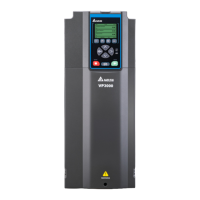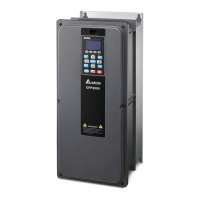Chapter 7 Second Development PlatformVP3000
379
API Instruction code Operand Function
281–286 D
FAND※
S
1
, S
2
Floating-point number contact type
comparison AND※
Type
Operand
Bit devices Word devices
16-bit instruction
- -
- -
32-bit instruction (9 steps)
FAND※
Continuous
execution
type
- -
Associated flag: none
X Y M K H KnX KnY KnM T C D
S
1
S
2
Caution for using operand: # : & | ^
See the specification of each model for the scope of device’s usage.
Description
S
1
: source device 1
S
2
: source device 2
This instruction compares the content in S
1
and S
2
. Take “FAND=” as an example, if the result
is “equal to”, the continuity of the instruction is enabled; if the result is “not equal to”, the
continuity of the instruction is disabled.
Use FAND※ instruction, users can execute operation directly by inputting floating-point value
(e.g. F1.2) in S
1
, S
2
or storing floating-point value in the register D.
The instruction is used for direct connection with busbar
API No. 32-bit instruction
Continuity
condition
Discontinuity
condition
281 FAND=
S
1
= S
2
S
1
≠ S
2
282 FAND>
S
1
> S
2
S
1
S
2
283 FAND<
S
1
< S
2
S
1
S
2
284 FAND<>
S
1
≠ S
2
S
1
= S
2
285 FAND<=
S
1
S
2
S
1
> S
2
286 FAND>=
S
1
S
2
S
1
< S
2
Example
When X1 = OFF, and D100 (D101) ≠ F1.2, then Y21 = ON and hold.
FAND<>
F1.2 D0
SET Y21
X1

